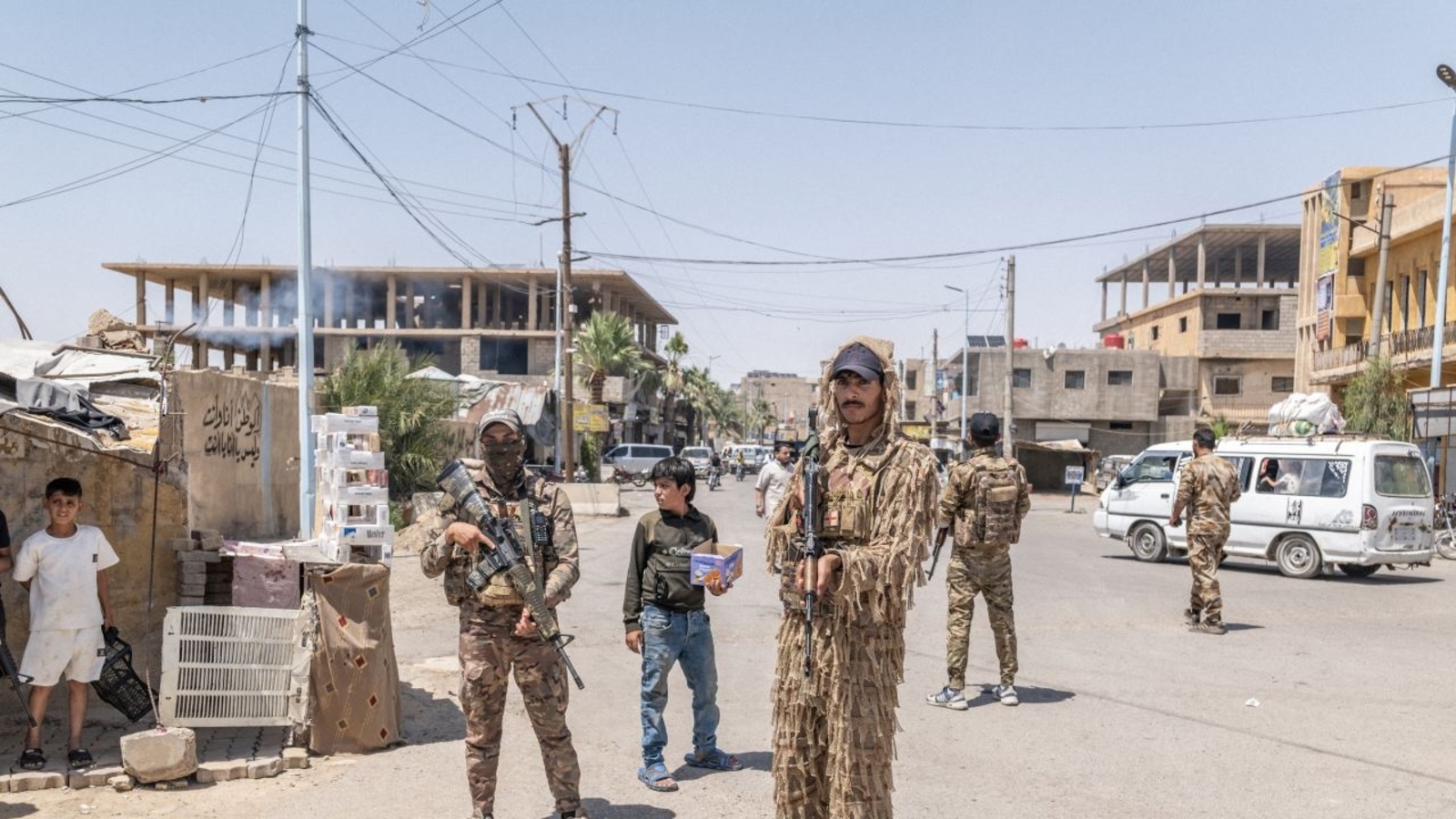A shop owner near the site said it was the first Islamic State attack on the road. “We are all afraid,” he said, visibly shaken a day after the ambush. “They have returned to our city.”
The soldiers were with the Kurdish-led Syrian Democratic Forces, which fought with the U.S. to bring down an Islamic State empire in Syria and Iraq that at its peak ruled millions of people and pulled in hundreds of millions of dollars a year in extortion and taxes.
Six years later, that rare, decisive victory over militancy is being eroded. Islamic State, now a decentralized mobile insurgency, is exploiting a reduced American presence and the collapse of Bashar-al Assad’s regime in Syria to enlist new recruits and widen its reach, said U.S. and Kurdish military commanders.
The group is freshly equipped after raiding arms depots late last year after rebels took Damascus and the regime’s army and its Iranian allies fled. It isn’t able to hold territory, but it is contributing to a sense of lawlessness that’s adding to the stress on the new state.
Islamic State militants staged 117 attacks in northeast Syria through the end of August, far outpacing the 73 attacks in all of 2024, according to SDF figures. They have also plotted attacks in the capital, 270 miles away from their bases of operation in the east, Syria’s government said.
Many of its assaults in the northeast were in Deir Ezzour province, a desert region the size of Maryland that is home to most of the country’s estimated 3,000 Islamic State fighters. A weeklong trip through the province’s towns showed how the militant group is adapting its tactics to again make its influence felt—by killing representatives of the area’s Kurdish rulers, renewing its demands for payments, and sowing fear.
“The withdrawal of American forces is inspiring Daesh,” said Goran Tel Tamir, a top regional SDF commander, using the Arabic acronym for Islamic State. “We see them launching more attacks on us. We are getting more complaints from people. This is putting us in a difficult position.”
A day after the ambush, The Wall Street Journal joined an SDF convoy of more than 20 vehicles led by Tel Tamir to patrol Hajin. It drove along the potholed, rural road leading into the small eastern city and stopped at the site of the attack. Shattered glass was still strewn across the road.
The militants shoot and run, Tel Tamir said, but they are also finding support in Sunni-dominated towns like Hajin, which was once a major stronghold for Islamic State. As the SDF convoy rolled by, men and boys glared from storefronts. Women wore black niqabs, the ultraconservative head-to-ankle garment that covers the body and face.
Islamic State emerged from the chaos of Iraq after the American invasion in 2003 and took advantage of the instability unleashed in Syria by the Arab Spring to capture swaths of territory. It declared a caliphate in 2014 and ruled 8 million to 12 million people at its peak.
The militants attracted hundreds of foreign fighters and became known for public beheadings and the enslavement of women. Loyalties in some towns were divided between Islamic State and the militias that opposed it.
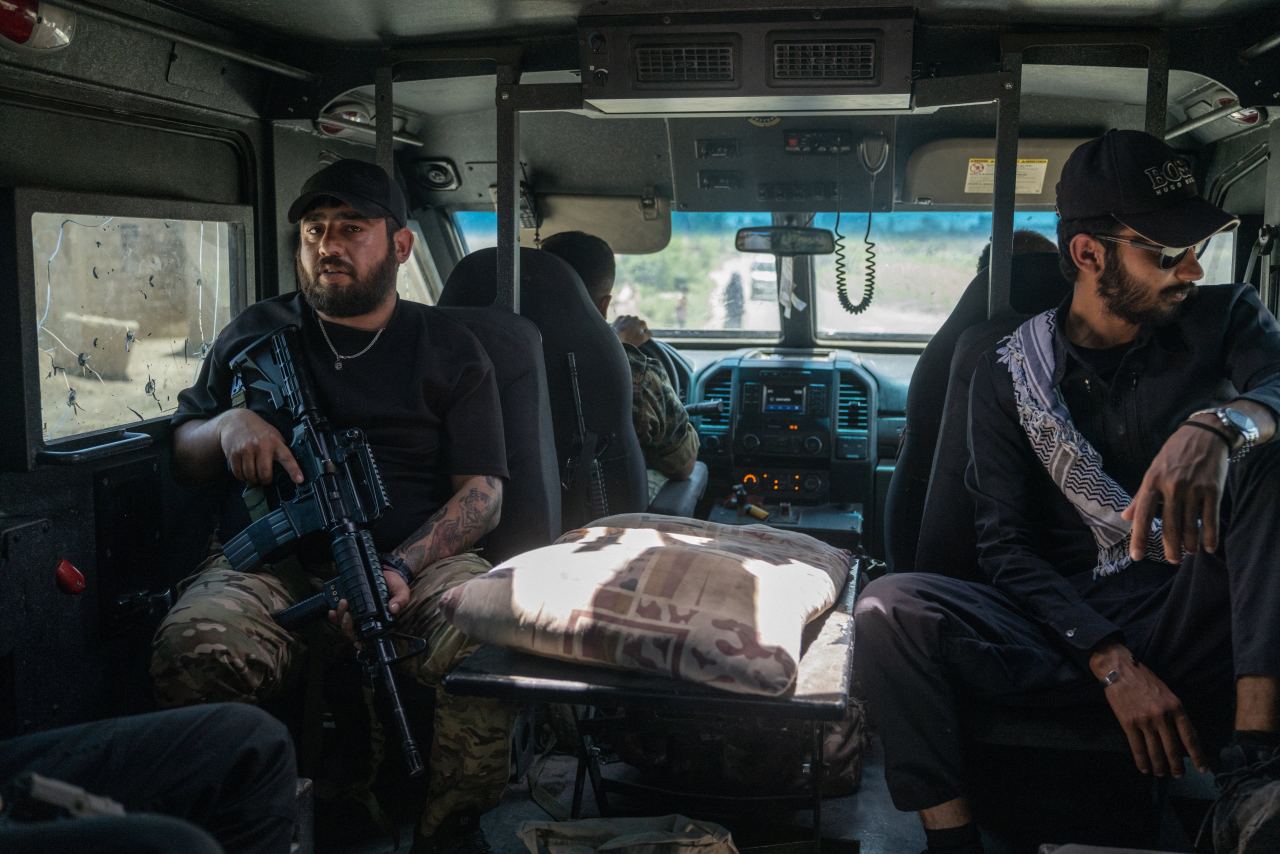 An SDF patrol moved along the outskirts of Hajin.
An SDF patrol moved along the outskirts of Hajin.
In 2017, U.S. coalition forces and the SDF drove Islamic State from its capital of Raqqa, forcing its remnants to retreat into Deir Ezzour province. After major battles in Hajin and other towns, thousands of Islamic State fighters and their families surrendered. Thousands still sit in detention camps in the area. Others melted into sympathetic, conservative Sunni Arab communities and are trying to rebuild.
While Islamic State is digging in, the U.S. has ramped down. Since April, the U.S. has pulled out around 500 of the 2,000 American troops in Syria and shut down multiple bases or handed them over to the SDF, which controls a swath of Syria’s northeast. In the coming months, the troop count could drop below 1,000, the Pentagon said. Much of the drawdown has occurred in eastern Syria, particularly Deir Ezzour.
Pentagon spokesman Sean Parnell said the reductions reflect U.S. success in degrading the group.
In August, the inspector general for the U.S. military’s Syria and Iraq mission against Islamic State said the U.S. and its partners have had significant success keeping the militants from regaining control of territory, but said Islamic State militants were trying to exploit Syria’s volatile and fragmented state to rebuild. The Department of Homeland Security says the group wants to conduct or inspire attacks in the U.S.
Islamic State militants targeted SDF patrols 20 times in May, leaving 15 soldiers wounded and 10 dead, including the two in the pickup truck. SDF commanders said it was the deadliest month for their troops since 2019, when Islamic State was driven from the last of the territory it controlled.
In August, at least seven SDF soldiers were killed, including five in a single day. In the first week of September, the militants launched eight attacks in Deir Ezzour alone. On Monday, two soldiers were killed there by a land mine planted by an Islamic State cell, the SDF said.
SDF commanders said Islamic State’s tactics have changed. They now work in small sleeper cells—sometimes with several cells in a town, each unaware of the others. They get orders to stage ambushes and plant improvised explosive devices on roads. It’s an inexpensive arrangement that is hard to stamp out.
“They depend on small groups, four or five people, for one operation,” said Siymend Ali, a spokesman for the People’s Defense Units, the main militia within the SDF alliance. “In this way, they are saving a lot of money. Everyone has one AK-47 and an explosive device.”
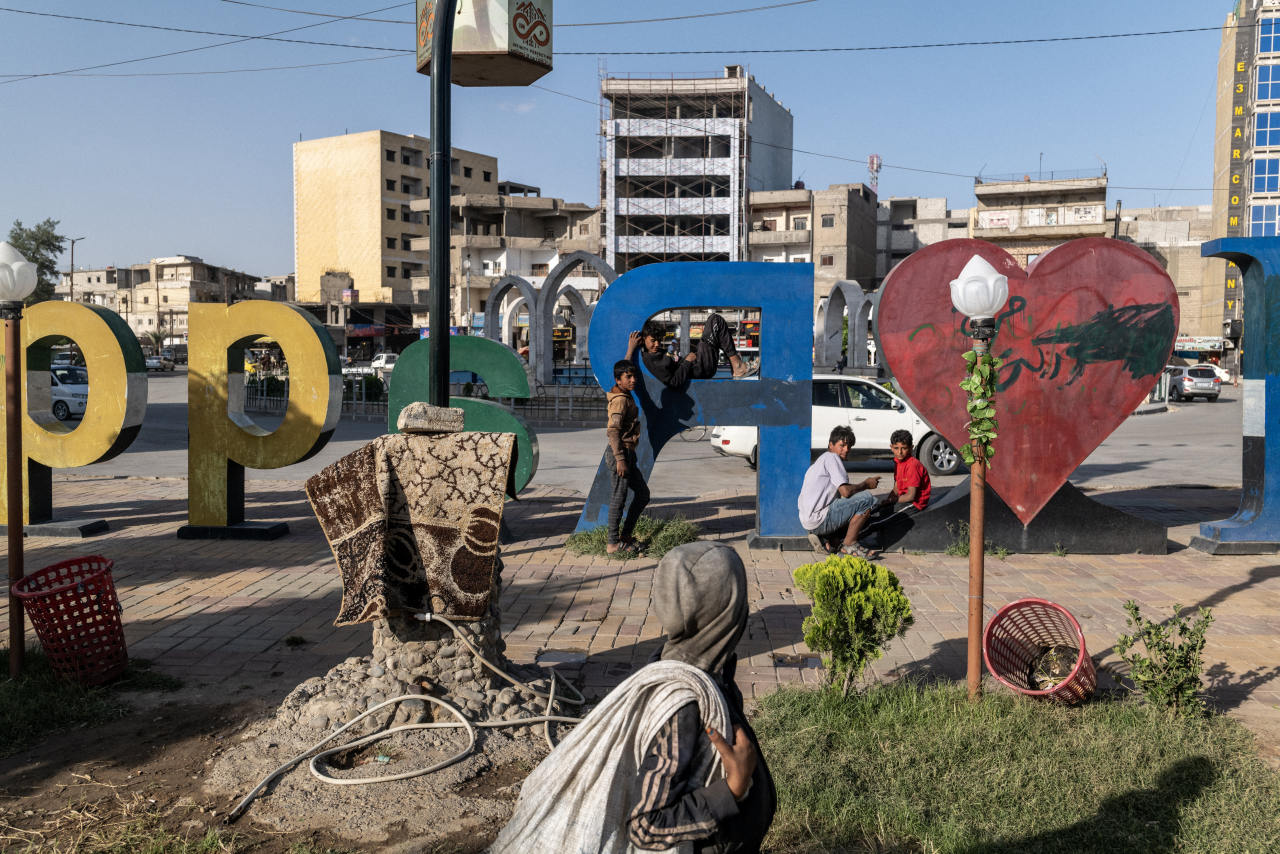 Children took a break from collecting garbage and begging in Naim Square in Raqqa, Syria.
Children took a break from collecting garbage and begging in Naim Square in Raqqa, Syria.
Militants no longer wear uniforms or carry their trademark black flags. Most are Syrian nationals, allowing them to blend easily into local populations.
SDF’s senior leaders are prime targets. Islamic State has assassinated several of them this year.
Khabat Shaydi, a commander in the SDF’s military council for Hajin, was heading a four-vehicle convoy to inspect SDF checkpoints in March, when Islamic State militants yelling “Allahu akbar”—God is great—fired three rocket-propelled grenades from a cluster of houses.
Two of his soldiers were severely injured. After a 10-minute firefight, the half-dozen attackers fled with their wounded across the Euphrates River into areas controlled by Syria’s government, which SDF commanders say are more lightly patrolled.
Later that day, Shaydi, who was lightly injured, got a call on his cellphone. The voice said, “Infidel. You survived. Next time, we’ll kill you,” then hung up.
Shaydi, himself a Sunni Arab, recognized the voice. It was a member of his own tribe, the Al-Shaitat.
For Shaydi, the attack brought back dark memories. His tribe revolted against Islamic State’s authority in 2014 but was put down with a campaign of shootings and beheadings that left hundreds dead, including some of his relatives.
The next year, he and some of his tribesmen joined the SDF determined to exact revenge and regain control of their tribal lands. Others took the opposite path and joined or were conscripted into Islamic State.
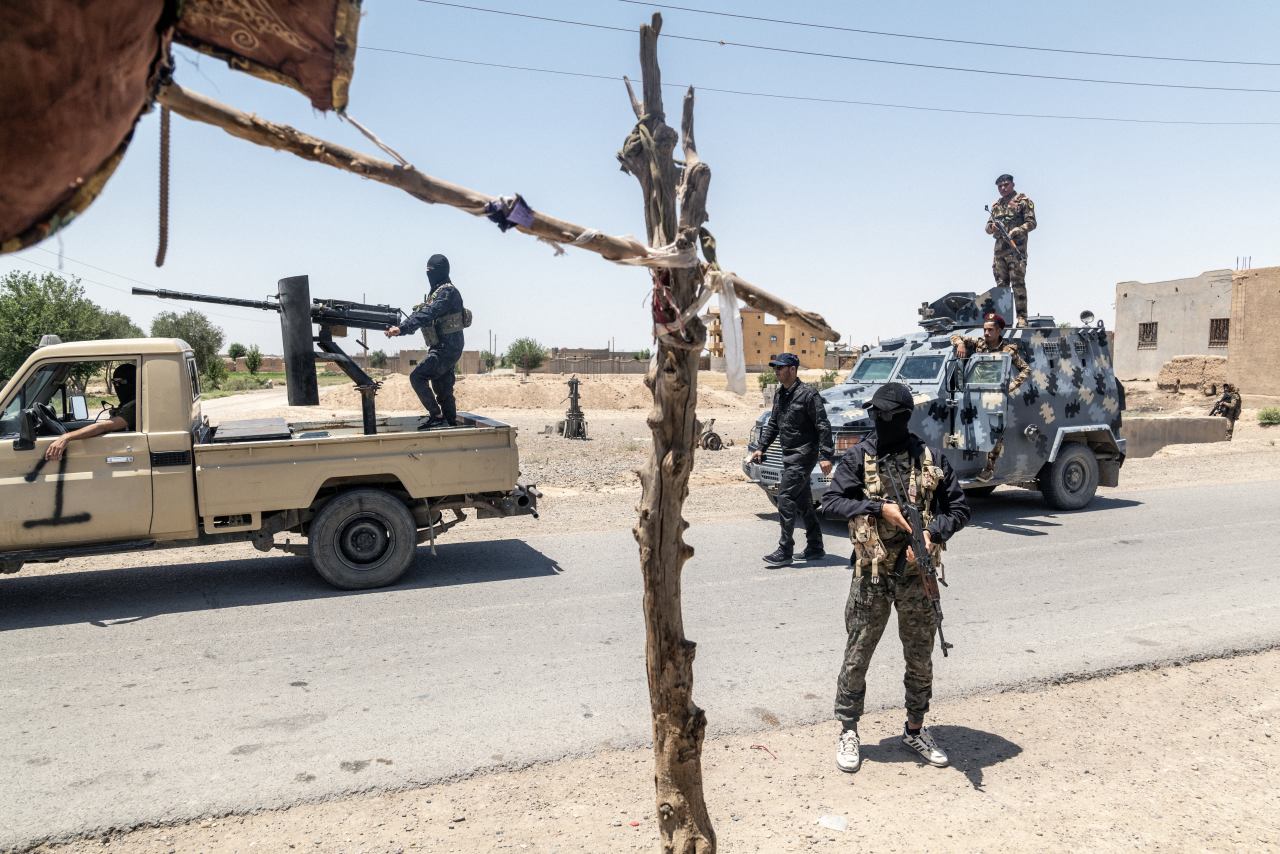 An SDF patrol on the outskirts of Hajin.
An SDF patrol on the outskirts of Hajin.
Today, Islamic State fighters ride motorcycles openly around the streets of Diban, about 30 miles to the north, said Muhammad Al Bou Herdan, an oil investor who fled the town eight months ago.
One day, a group of militants phoned him and demanded he pay zakat—an Islamic tithe—in the amount of $1,000. He said it was standard practice in Diban, one of several towns where Islamic State has many sympathizers and exerts influence through intimidation. A masked man came to his home and picked up the cash.
“They were watching me and all my movements,” Al Bou Herdan said. “They knew all the details about my work and my family. I couldn’t escape paying.”
Two months later, an Islamic State militant from a different cell phoned and also demanded $1,000. When Al Bou Herdan told them he had already paid, the militant said he was lying and threatened to target his small oil refinery and his home if he didn’t pay. Al Bou Herdan politely refused and blocked the phone number, he said.
Later, he spotted two men on a motorcycle at the gates of his refinery, where he had three employees. “The moment I saw them, I knew they were looking for me,” Al Bou Herdan said. “I turned my car around and drove away fast. They started shooting.”
One of his workers was shot and killed. Al Bou Herdan shut down his refinery and fled to Hajin. He changed his phone number and closed his social-media accounts. He carries a gun. His two cousins, also armed, protect him day and night.
Farhad Shami, an SDF spokesperson, said the group has received many reports of similar cases of extortion.
While the SDF controls much of Syria’s northeast, its troops are stretched thin. In addition to patrolling the territory, they are responsible for guarding camps and prisons housing nearly 50,000 former Islamic State fighters, along with their wives and children. The SDF has asked foreign countries to take back their citizens there, but most haven’t.
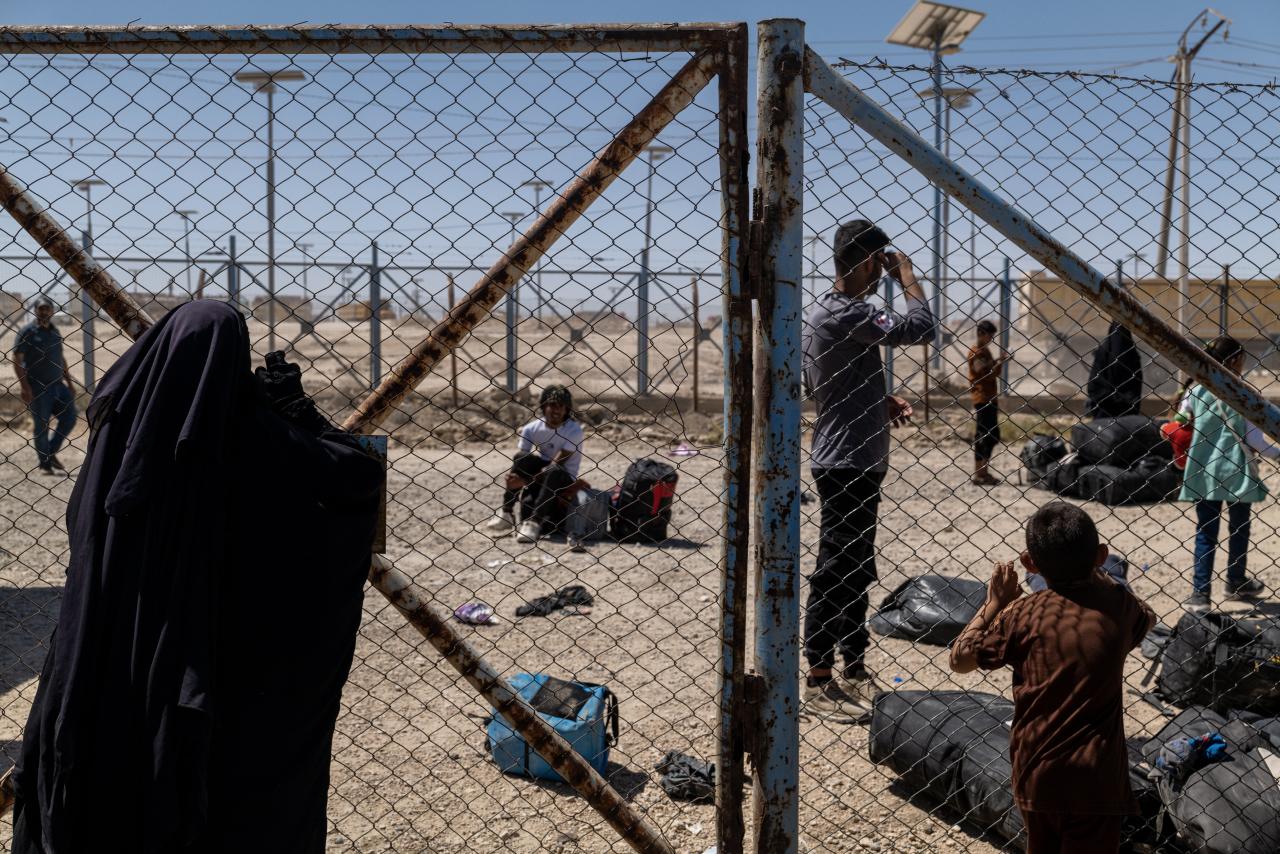 Iraqi families associated with Islamic State waited to be repatriated from a camp in northeast Syria.
Iraqi families associated with Islamic State waited to be repatriated from a camp in northeast Syria.
Since the Assad regime fell, the Kurdish-led forces has also fought on-and-off battles with militias backed by longtime foe Turkey. In August, they found themselves in confrontations with forces linked to Syria’s new government. They recently clashed again in the northwestern city of Aleppo.
The government and SDF signed an accord in March under which the Kurdish-led forces were to be integrated into the Syrian army and government, but it has been eroding amid mistrust between the two sides, creating room for Islamic State to strengthen its foothold.
“This area is too big, and the Damascus government is unable to control it,” Tel Tamir said. “Daesh is taking advantage of that.”
Syria’s Ministry of Information acknowledged that “a security gap” exists due to the government’s limited forces and lack of control over all areas, allowing armed groups to move and operate more freely. Nevertheless, security forces have successfully disrupted Islamic State cells in Damascus and thwarted planned attacks, said the ministry.
“While ISIS continues to pose a danger, the government remains fully committed to containing and eradicating it,” the ministry said.
Under the Assad regime, Arab tribes and the Kurds in the northeast were unified by their resistance to the minority Alawite regime in Damascus. Now, some Sunni Muslim Arab communities prefer to be governed by Syria’s new leaders, who are mostly Sunni Muslim Arabs, rather than the Kurdish-led local government.
President Ahmed al-Sharaa was once aligned with Islamic State before switching allegiances to Al-Qaeda, then ultimately swore off extremism as he and his forces fought to control Syria. Distrust lingers. Some SDF commanders question whether former jihadists in the government have renounced their hard-line ideology, allowing Islamic State operatives to move unhindered.
“These claims are politically motivated and have no basis in fact,” said the Syrian Ministry of Information.
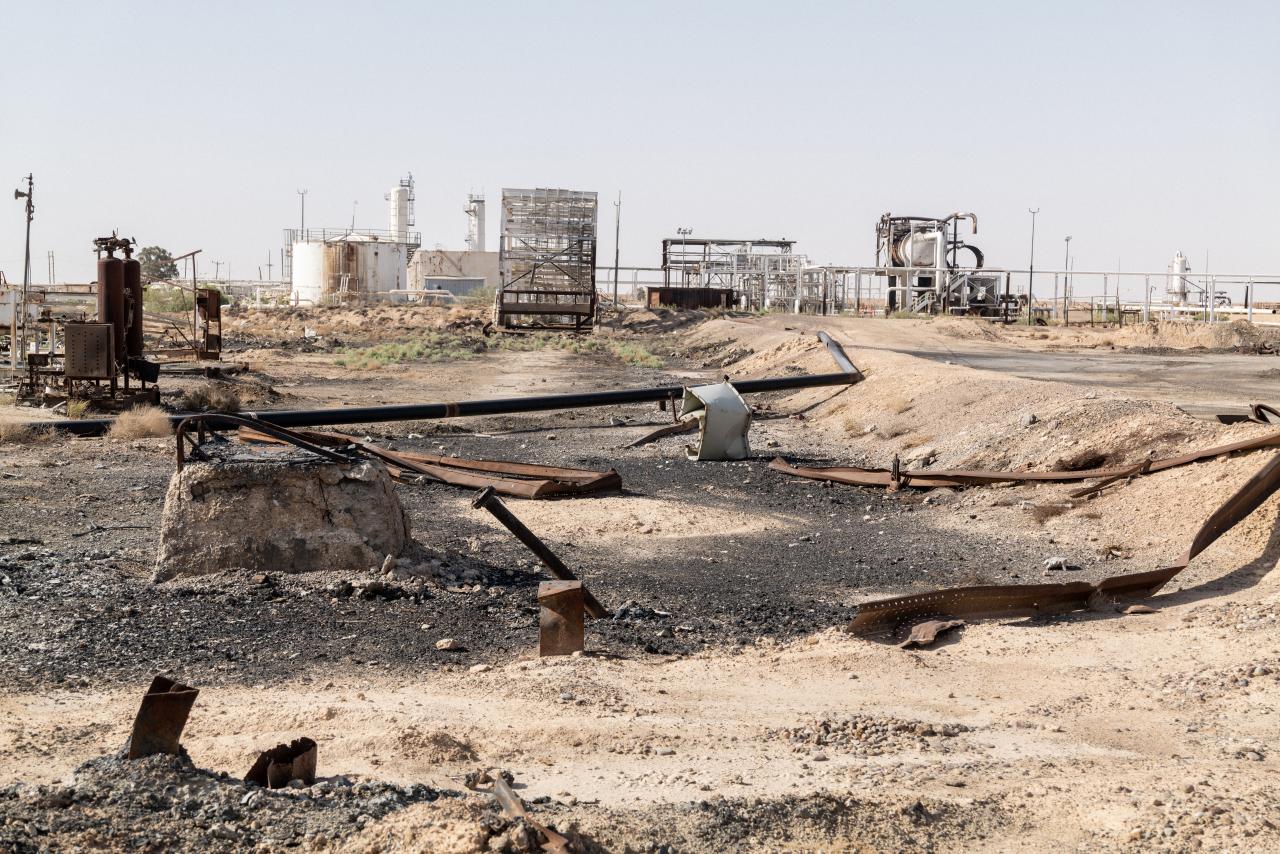 The site of a former gas plant in Deir Ezzour that was seized by Islamic State and later recaptured by the SDF.
The site of a former gas plant in Deir Ezzour that was seized by Islamic State and later recaptured by the SDF.
The SDF has alienated some by arbitrarily detaining hundreds of civilians “during mass raids carried out under the pretext of pursuing [Islamic State] cells,” the Syrian Network for Human Rights said in a report in August.
The U.S. military has helped keep ethnic and religious tensions from boiling over. It brokered a truce after clashes erupted two years ago when the SDF arrested a prominent Sunni military commander. Tensions are expected to rise with the reduced U.S. presence, the Inspector General report said in August.
U.S. forces continue to help the SDF with technology and intelligence to track Islamic State, and provide air support for SDF operations. The U.S. military said its forces killed a senior Islamic State leader along with his sons in July, and another in August.
Still, SDF commanders in Deir Ezzour are feeling the Americans’ absence. Instead of interacting face to face, they now send requests for help to senior commanders hundreds of miles away, who then pass them to the U.S. military, Tel Tamir said.
As the convoy departed Hajin and headed back to the SDF base, it passed former American encampments that sat empty in the desert behind thick barriers topped with barbed wire.
The Americans used to conduct daily patrols, many with the SDF, that helped deter Islamic State and reassure the population, Tel Tamir said nostalgically.
“When people here see the Americans, they feel safe,” he said.
Write to Sudarsan Raghavan at sudarsan.raghavan@wsj.com
